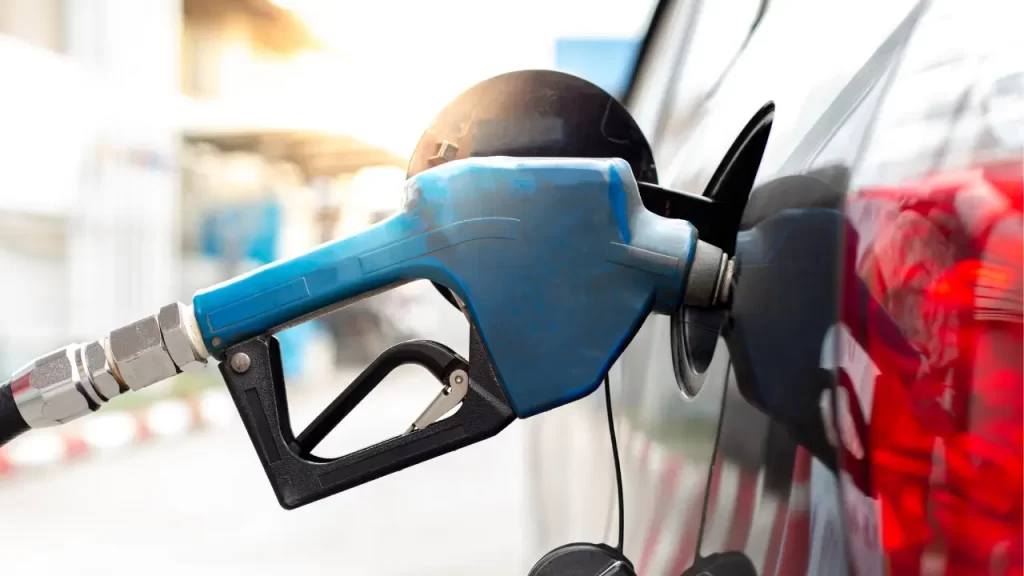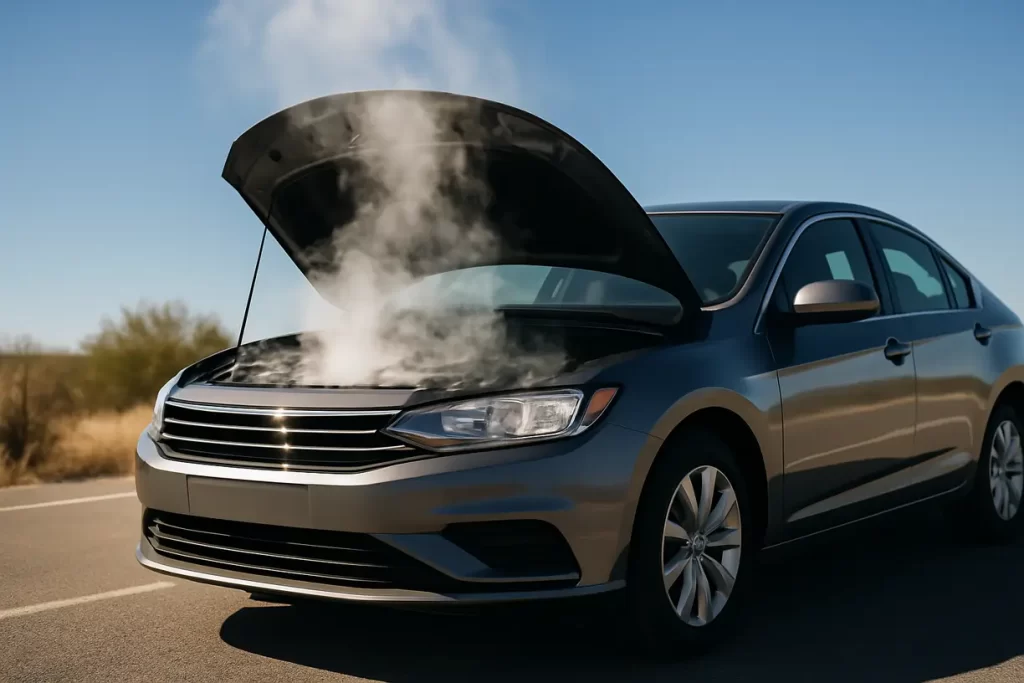A car battery is like the heartbeat of the vehicle, the source of all power—from starting the engine to powering the lights and other electronic equipment. If the battery is unstable, no matter how well-serviced the car is, it will still be difficult to start or run smoothly.
Typically, a car battery lasts between three to five years. Some can last up to ten years, but that only happens under ideal conditions, such as cool weather and careful usage.
To know how long a car battery will last, you need to understand the factors that affect its lifespan. Hot weather, irregular car usage, and how you charge and maintain the battery can all cause it to deteriorate faster. For example, the lifespan of a dry cell battery depends on how often you check and maintain the battery’s water level.
By fully understanding how long a battery can last, you can avoid the risk of the battery suddenly dying while on the road. Always keep the battery fully charged, avoid leaving the car unused for long periods, and if possible, avoid charging with incompatible chargers. All these practices can actually extend the life of your car battery beyond the usual expectancy.
Average Lifespan of a Car Battery
Most car batteries last between three to five years. However, this is only a rough estimate. Some batteries can last up to ten years, provided the conditions are truly ideal. Factors such as how often you use the car, the climate where you live, and how well you maintain the battery all have a significant impact on its lifespan. For example, extreme heat can cause the battery to deteriorate quickly, while cold weather can make it harder for the battery to start the engine.
Driving habits are also important. If you frequently take short trips, the battery may not have enough time to fully recharge, which over time reduces its performance. This is why it’s difficult to predict exactly how long a car battery will last. However, knowing the average battery life makes it easier to prepare and avoid being stranded on the road due to a dead battery.
If you ask how long a dry cell car battery lasts, the answer depends on how well you maintain the battery’s water level and other external factors. Besides physical maintenance, modern Battery Management System (BMS) technology, which increasingly uses artificial intelligence, monitors battery performance in real-time. This allows drivers to receive early warnings about potential battery issues, extending battery life by up to 20% and preventing sudden failures. With proper care, a car battery can provide service longer than usual.
Types of Car Batteries and Their Lifespan
Lead-acid batteries still hold their ground because they’re dependable and won’t bust your budget. They run on a simple setup: lead plates bathed in sulfuric acid. It’s not glamorous or high-tech, and these batteries are pretty hefty with limited juice—think about 30 to 50 watt-hours per kilogram and good for 300 to 500 charge cycles. That’s why they fit right into conventional cars where cost and reliability matter most. Usually, these batteries stick around for three to five years before calling it quits.
Step it up a notch, and you hit AGM batteries. Instead of just sloshing acid, these use a fiberglass mat soaked with electrolyte, which lets them charge faster and shrug off bumps and vibrations better. Cars with start-stop systems or luxury rides often sport AGMs because they handle constant engine restarts without complaining. Expect them to last between four and seven years.
Then there’s the Enhanced Flooded Battery, or EFB—kind of a tough middle ground. Not quite as robust as AGM but definitely tougher than regular lead-acid. They last around four to six years and are perfect for smaller cars or those entry-level start-stop setups that don’t demand as much electrical oomph.
Now, lithium-ion batteries play in a different league. With energy levels soaring between 150 and 250 watt-hours per kilogram and more than 1,000 charge cycles under their belt, they’re the go-to for electric and hybrid vehicles. Light, powerful, and long-lasting—these batteries can run up to ten years without breaking a sweat. The catch? Pricey. You’ll mostly find these in EVs and not so much in your everyday sedan.
Really, how long any battery sticks around depends on what kind you pick and how you treat it. If you want fewer surprises on the road, match your battery to your driving style and climate. That little extra thought can mean the difference between cruising smoothly and being stuck with a dead battery.
Climate and Temperature
Batteries don’t like extremes. When the mercury plummets and your car’s sitting in a frigid garage or out on a frosty morning, the chemical reactions inside slow to a crawl. That thickening electrolyte acts like molasses, making your engine work overtime just to turn over. You’ve probably noticed how a battery struggles on those freezing days—sometimes it just won’t catch, leaving you staring at the dash.
Swing to the other end of the spectrum, and blistering heat becomes the silent killer. High temperatures speed up the chemical hustle inside the battery, sure, but they also accelerate corrosion and cause the battery fluid to evaporate faster than you’d expect. That evaporation dries the battery out, and with less fluid, it can’t do its job as well. It’s why batteries bake in hot climates tend to croak early.
There’s a sweet spot around 80°F (26.7°C) where batteries feel right at home, performing best and lasting longer. Too cold or too hot, and the clock starts ticking faster on their lifespan.
Modern rides sometimes fight back with thermal insulation covers or liquid cooling systems wrapped around the battery, keeping temperatures in check. Those clever tricks can stretch battery life by 15 to 25 percent, saving you headaches and surprise roadside woes.
Driving Habits
Short trips are the sneaky killers of car batteries. Every time you hop in for a quick errand and shut off the engine before the battery has had a proper chance to recharge, it chips away at its strength. The alternator needs time—ideally longer drives at decent speeds—to top off the battery’s energy. Otherwise, you’re running it down bit by bit without giving it a break.
Add to that all the gadgets and gizmos nowadays, plus those start-stop systems that cut the motor at every red light. They’re handy for saving gas but punish your battery with nonstop charging and draining cycles. It’s like asking it to run a marathon without a warm-up.
Throw in aggressive driving—think flooring the pedal or running every electrical gizmo like the heater, seat warmers, and high beams—and the battery has to work even harder. It wears out faster, leaving you with less juice and a shorter overall lifespan. Treat your battery like a marathon runner, not a sprinter, and it’ll stick around much longer.
Vehicle Usage and Maintenance
Rough, bumpy roads don’t just rattle your suspension—they can shake up the delicate parts inside your battery, causing damage that adds up over time and leads to an early breakdown. Leaving your lights, radio, or other electronics running with the engine off is like draining your phone’s battery overnight—it saps power fast and leaves you scrambling for a jumpstart.
A little TLC goes a long way. Tightening those battery clamps, wiping away corrosion from the terminals, and keeping an eye on voltage levels all add up to extra years on your battery’s clock. Skip these simple steps, and your battery might die a slow, frustrating death long before it should.
Battery Storage and Care
Store a battery wrong, and it’ll lose juice before you even get it under the hood. Keep it cool and dry—somewhere between 10°C and 25°C (50°F to 77°F) works best. Too hot or too cold, and the battery starts quietly bleeding power. Hooking up a battery maintainer or trickle charger while it’s sitting idle stops it from self-discharging. It’s like giving the battery little sips of energy to stay fresh.
Before tucking it away, wipe down the terminals—clean surfaces fend off corrosion, which can sneak in and cause headaches later. Treat your battery right from day one, even before installation, and it’ll thank you with better performance down the road.
Signs Your Car Battery Needs to Be Replaced
If your engine drags when you turn the key, or takes forever to finally roar to life, your battery’s probably running low on power. That sluggish crank sound means it’s struggling to deliver the juice the starter needs. When headlights dim or the dashboard lights flicker like a bad signal, those are red flags waving that the battery’s on its last legs.
Take a close look at the battery terminals, too. If you spot nasty buildups—white, bluish-green, or rusty brown crusts—that’s corrosion in action. It’s the result of battery acid reacting with the metal, and it blocks electricity from flowing smoothly. Cleaning it up might help for a bit, but it often comes right back. When corrosion keeps cropping up, it usually means the battery’s nearing its expiration date and it’s time to swap it out.
Want a solid gauge of your battery’s health? Grab a voltmeter. A fully charged battery sits pretty above 12.6 volts. Once it dips below 12.4 volts, you’re looking at a battery that’s half-drained and losing its edge. Drop down to 12.0 volts or less, and it’s a sign the battery’s either dead or way past ready for retirement.
When trouble signs stack up—slow engine start, dim lights, terminal corrosion, and low voltage—it’s smarter to replace the battery before it leaves you stranded. How long a dry cell battery lasts isn’t set in stone; it hinges on how you treat it and the conditions it faces. Keep an eye on these warning signs, and your battery will stick around as long as possible.
Tips to Extend the Lifespan of Your Car Battery
Park in the Shade or Garage
Extreme heat and freezing cold slam your car battery in ways you might not expect. Around 80°F (26.7°C) is the sweet spot where it runs best and lasts longest. Parking under a blazing sun or leaving your car out in the bitter cold makes the battery struggle, breaking down faster. Those short trips? They’re sneaky drains that don’t give the battery enough time to bounce back fully. Whenever you can, hit the road for longer stretches, your battery needs that chance to recharge and stay healthy, steering clear of an early burnout.
Use a Battery Maintainer or Trickle Charger for Long-Term Storage
Leaving your car parked for a stretch? Hooking up a battery maintainer or trickle charger is a smart move. These little gadgets quietly drip-feed a steady, low-level charge that’ll stop your battery from running dry and developing sulfation—that annoying crust that kills battery life. Setting one up is a breeze: clip it onto the battery, plug it in, and forget about it. While your car sits idle, the maintainer keeps the battery fresh and happy, so when it’s time to hit the road again, you won’t be stuck fiddling with jump leads.
Regularly Check and Clean Battery Terminals
Corrosion and dirt gunking up your battery terminals choke off the electricity flow, making your battery work overtime and lose efficiency. Grab some baking soda, mix it with water, and use a brush to gently scrub those terminals clean. After a good scrub, rinse with water and dry everything off. Clean terminals mean a solid connection, helping your battery punch above its weight and last longer.
Test Your Battery After Three Years
After about three years on the road, it’s a smart move to get your battery checked out at a workshop. They can run internal resistance tests that catch early signs your battery’s breaking down inside. When resistance creeps up, it usually means the battery’s chemistry is going sideways. Spotting this early lets you swap in a fresh battery before it leaves you stranded. Plenty of service centers have load testers that reveal weak batteries well before they cause headaches. Catching the problem ahead of time means no surprises when you’re trying to start the car on a chilly morning.
Recycling and Battery-as-a-Service (BaaS) Innovations
Battery recycling has taken a huge leap lately. These days, materials like lead, lithium, and plastics get recycled with over 90% efficiency, which means fewer raw resources wasted and less junk piling up in landfills. On top of that, the Battery-as-a-Service (BaaS) model is catching on fast. Instead of owning a battery outright, you lease it and swap it out when it’s time. This approach slashes upfront costs and makes upgrading painless, all while cutting down environmental impact. It’s a neat way to keep batteries out of the trash and make fresh power more accessible.
When to Replace Your Car Battery
Car batteries usually hang around for three to five years, but that’s just a ballpark figure. How long yours lasts really depends on how it’s performing and how you treat it. If your engine starts to grunt and struggle when you turn the key, your headlights look like they’re running on fumes, or the whole electrical system feels sluggish, it’s a good sign your battery’s waving the white flag—and it’s time to swap it out sooner rather than later.
These days, smart sensor tech lets you track your battery’s health right from your phone. You get early heads-ups if the battery’s on the decline, so you’re not caught off guard by a dead battery at the worst moment. Weather plays its part too. Scorching heat or bone-chilling cold can wear your battery down faster, so watch out for those extremes. And don’t forget the battery type—lithium-ion packs in hybrids tend to outlast traditional lead-acid batteries by quite a bit.
Relying just on the calendar date stamped on your battery won’t cut it. Keep tabs on how it’s holding up, get it tested regularly, and when it starts acting flaky, don’t wait around. Replace it before you end up stuck in the driveway. Bottom line: how long a dry cell battery lasts boils down to how well you care for it. Handle it right, and it’ll stick with you for the long haul. Ignore the signs, and it might bail on you when you least expect it.
Conclusion
Car batteries usually run their course in three to five years, but that’s just a rough sketch. Where you live plays a big role, baking in scorching heat or freezing your tail off in winter wears batteries out faster. Then there’s how you drive: lots of quick hops around town don’t give the battery enough time to recharge properly, which chips away at its strength over time.
Keeping the battery in shape means doing the little things: wiping the terminals clean, double-checking that you didn’t accidentally leave the lights on, and having the battery tested every now and then, especially after a few years. As soon as you notice sluggish starts or dimming lights, don’t wait for your car to throw a tantrum and refuse to start. Swapping out a tired battery early beats getting stranded, and saves a pile of headaches down the road.


